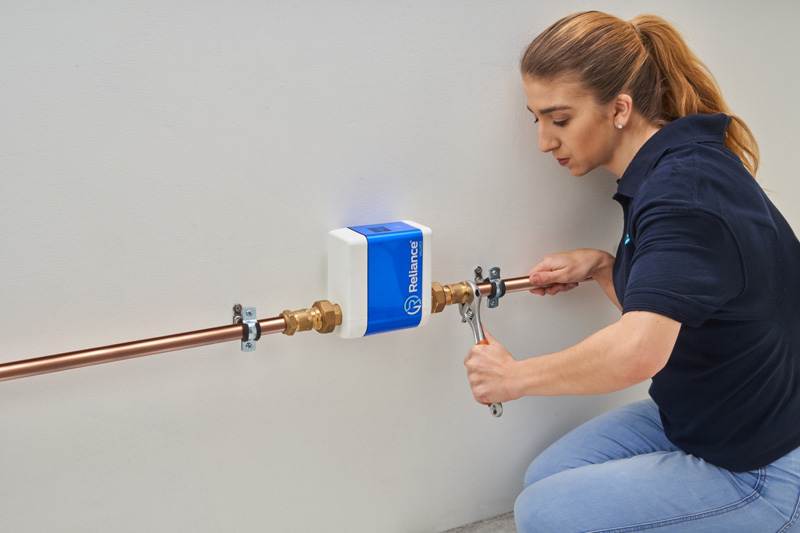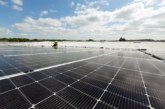
With a requirement to deliver safe, energy efficient, and long-term environmentally-friendly buildings that can withstand the tests of time, Martin Nicholson, Divisional Director of Specification at RWC, outlines how green plumbing technologies can lay the foundations to create the sustainable new builds of the future.
If we want to build truly greener homes and commercial dwellings, we need to consider first and foremost what goes on behind closed walls. Relying on plumbing technologies that are fast to install, minimise the risk of costly leaks, and are easy to maintain in the long run is essential to keeping costs down and ensuring that the occupants of the building face minimal disruption should maintenance be required.
However, with energy costs rising at a worrying pace, and legislation, such as Part L of the Building Regulations, aiming to reduce the UK’s carbon footprint, we need to ensure that our plumbing technologies are becoming more and more green.
There are the obvious options of planning low-flow toilets, installing solar panels or usage meters, but one would argue that we need to start by making the plumbing that feeds into these systems as efficient as possible. If our plumbing technologies are efficient, by minimising the waste of water and heat in our systems, we are able to reduce the quantity of natural resources required to supply water to a building or heat it at the source.
When it comes to plumbing, the three most common factors that cause wastage are leaks, temperature control, and inadequate installation. If we can plan plumbing technologies that control potential damage before it even occurs, we are one step closer to truly greener builds.

Here, we need to consider what goes on behind the walls. The number one enemy of green plumbing, leaks are not only incredibly hard to detect, they can cause vast structural damage and lead to huge water wastage and in turn to rising energy costs. Not to mention the disruption and financial burden repairs can cause if walls need to be opened up to fix a leaky pipe or fitting.
A staggering £930 million is paid out by insurances for water damage in the UK every year, and with an estimated 43% of building owners experiencing leaks, damage control is vital. Simply put, leaks are every building owner’s nightmare.
Preventing leaks from appearing long before they can cause any real damage is easy with RWC’s Reliance Valves MultiSafe Leak Detector Control Valve. This smart plumbing technology sends an alert when unusual water fluctuation is detected, and automatically shuts off the water supply.
It is also capable of detecting when even very small amounts of water continue to leak over time, allowing micro leaks to be stopped before they can cause costly damage to the building. This translates to huge water and energy savings, making the plumbing system significantly more sustainable, while also earning projects extra BREEAM points, making them an attractive and eco-friendly investment.
What makes the smart technology of the MultiSafe Leak Detector a truly green plumbing technology is that it also monitors water usage and patterns and so identifies probable areas for water conservation. As it can be connected to multiple connections on the same Wi-Fi network, it can centrally control several devices in large buildings or apartments, making it the ideal plumbing technology to be installed in new builds.
Conservation is the key
Buildings require a lot of water and energy for both washing and heating, but unfortunately we do not always use water and heat in the most efficient way. Whether it is taps being left open for too long, boilers needing to work harder than necessary or windows being left open while the heating is on, a lot of water and energy is wasted daily across the UK. In order to optimise water conservation in new builds, we need to ensure that plumbing technologies that are installed are as efficient as possible.
To achieve this, we need to look at the valves that maintain the flow rates within the plumbing system. Intelligent valves, such as Reliance Valves Floreg Isolating Valves, ensure flow can be maintained at the desired level. The Floreg Isolating Valve can either be shut off completely, the water flow can be restricted with the external lever, or the water flow can be controlled via a flow limiting cartridge installed to a predetermined level from 4LPM to 15LPM.
This is particularly useful for toilets, which often have a six or nine litre flush option. If used efficiently, this could translate into serious water conservation several times a day.
A lot of planning goes into the design and construction of new builds, but to ensure that they are as green as possible, we must also consider the materials used — even down to the smallest fitting in a large plumbing system — and ways to make the installation as fast and efficient as possible.
Push-fit systems such as the lightweight range of JG Speedfit and the brass push-fit connectors of SharkBite are ideal solutions as they are easy to install due to the lack of tools required to be assembled. Both push-fit ranges further address our goal to create green new builds, as they are completely corrosion-proof — they therefore last much longer than other systems and require less maintenance, making both the installation and maintenance faster and greener for the long term.
While plumbing technologies cannot save the planet on their own, they play a vital part in ensuring that our new builds are as energy efficient and environmentally friendly as possible. Green plumbing technologies will not only make our buildings more sustainable in the long run, but they will also help us conserve resources and reduce wastage, being kinder to our environment overall.
Clcik here for more information on the RWC family of brands.









